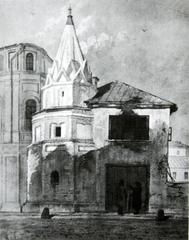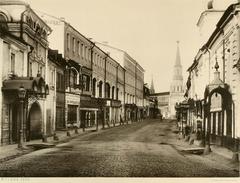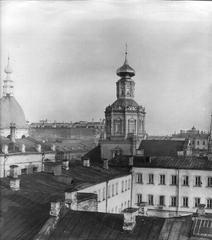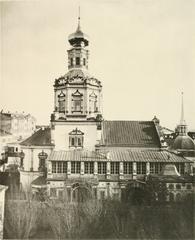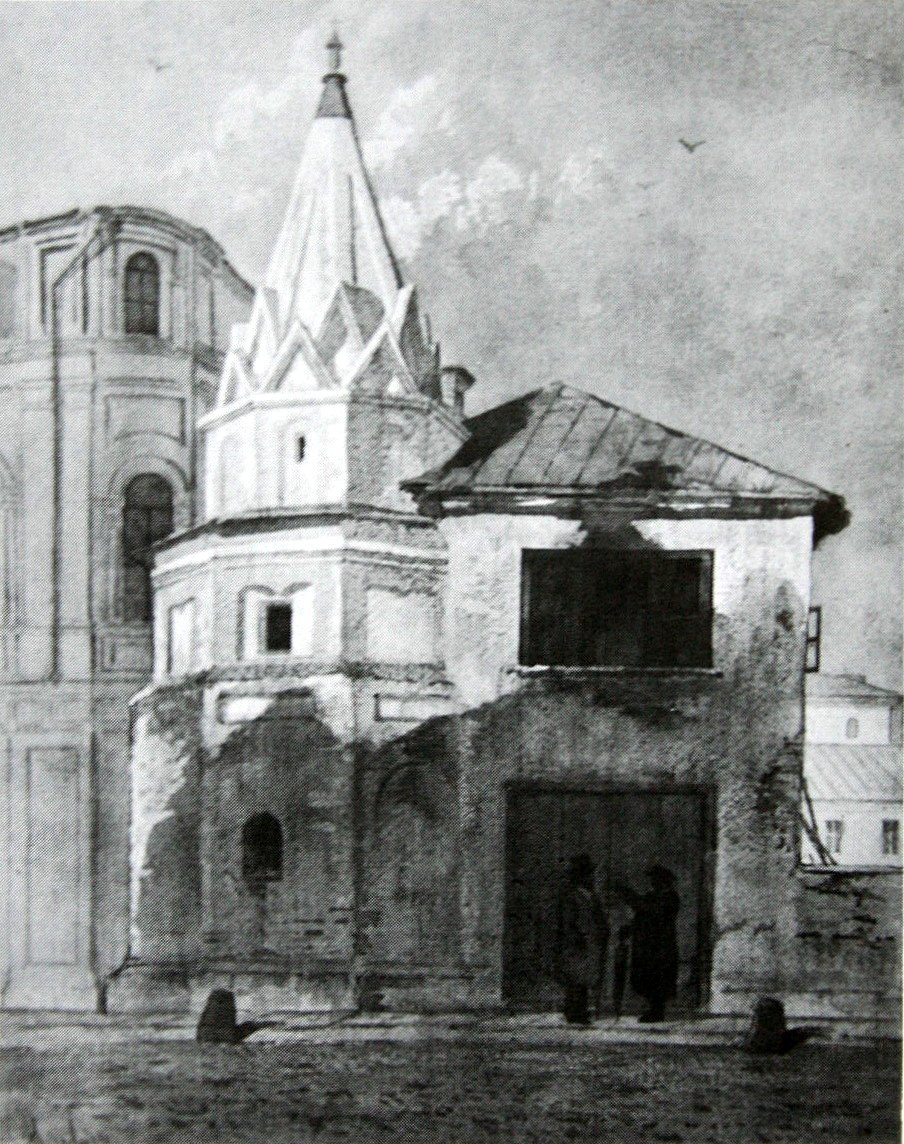
Epiphany Monastery Moscow: Visiting Hours, Tickets, and Travel Guide
Date: 14/06/2025
Introduction
The Epiphany Monastery, also known as the Bogoyavlensky Monastery, is one of Moscow’s oldest religious landmarks, with roots in the late 13th or early 14th century. Established during a formative period for the Russian Orthodox Church, the monastery quickly gained importance as both a spiritual and civic institution, helping shape Moscow as a major religious and political center. Dedicated to the Feast of the Epiphany—a significant Orthodox celebration held annually on January 19—the monastery remains a living center of worship, history, and culture.
Visitors can explore centuries of architectural evolution, from the original wooden churches to the magnificent Moscow Baroque cathedral completed in the 17th century. The monastery complex boasts ornate domes, iconostases, historic frescoes, and monastic buildings, all reflecting the resilience of Russian Orthodoxy through fires, wars, Soviet closure, and modern restoration. Today, the Epiphany Monastery offers free access to its grounds, guided tours in Russian and English, and a deeply immersive experience in the heart of Moscow’s Kitai-Gorod district—just steps from the Kremlin and Red Square (familyholiday.net; moscow.info; Advantour).
This guide provides essential information on visiting hours, tickets, accessibility, architectural highlights, religious significance, and practical tips for a meaningful visit.
Table of Contents
- Introduction
- Historical Overview
- Religious and Cultural Significance
- Architectural Highlights
- Practical Visitor Information
- Visitor Experience and Tips
- Nearby Attractions
- Accessibility
- Restoration and Preservation
- Frequently Asked Questions (FAQ)
- Conclusion
- Sources and Further Reading
Historical Overview
Early Foundations
Traditionally attributed to Saint Alexis, Metropolitan of Moscow, the Epiphany Monastery was founded during the city’s rise as a spiritual and political capital. The monastery’s dedication to the Epiphany—one of the most important feasts in the Orthodox calendar—gave it a special theological status. Its location in Kitai-Gorod, near the Kremlin, placed it at the center of Moscow’s religious and civic life (moscow.info).
Throughout its history, the monastery survived invasions, fires, and plagues, including the sacking by Tokhtamysh’s forces in 1382 and several destructive fires in the 16th–18th centuries (Wikipedia). Despite adversity, it flourished under the patronage of princes and tsars, amassing property and influence.
Soviet Era and Modern Revival
Following the 1917 Revolution, the monastery was closed, and most of its buildings were repurposed or demolished. The 1980s saw the start of restoration efforts, and in 1991, the monastery was returned to the Russian Orthodox Church, resuming religious functions and extensive restoration (moscow.info; Sacred Destinations).
Religious and Cultural Significance
As Moscow’s oldest male monastery, Epiphany Monastery played a pivotal role in shaping the city’s spiritual identity. Its clergy participated in state ceremonies, and the site was a hub for theological education, manuscript production, and charity. The annual Epiphany feast draws large crowds for the blessing of waters, and the monastery has long housed miracle-working icons and relics venerated by the faithful (RBTH).
The monastery also inspired artists and writers and was a center of cultural life, surviving periods of suppression to emerge as a symbol of Russian religious revival in the 21st century (Moscow.Info).
Architectural Highlights
Epiphany Cathedral
The centerpiece is the Epiphany Cathedral, a masterwork of Moscow (Naryshkin) Baroque, completed in 1696. Its striking red brick walls are adorned with white stone carvings, kokoshniks (arched gables), and five gilded domes arranged in a quincunx, symbolizing Christ surrounded by the Evangelists (Advantour; Wikipedia).
Interior Features:
- Richly carved iconostasis with icons by leading artists.
- Vaulted frescoes depicting biblical scenes and saints.
- Alabaster sculptures and imported marble detailing from the early 18th century.
Bell Tower and Monastic Buildings
The 18th-century bell tower, refectory, monks’ cells, and abbot’s chambers reflect the monastery’s growth and changing architectural tastes. The Gate Church of St. John the Baptist and the monastic enclosure walls display elements of Russian Baroque and Neoclassicism (Moscow Monasteries Guide).
Practical Visitor Information
Location and Access
- Address: Bogoyavlensky Pereulok, 2, Moscow, Russia, 109012
- Nearest Metro: Kitai-Gorod, Lubyanka
Visiting Hours
- General Hours: 9:00 AM – 6:00 PM daily (hours may be extended during major feasts).
- Service Times: Check the official schedule for liturgical service hours.
- Special Events: Access may be restricted during religious holidays or restoration.
Tickets and Admission
- Entry: Free for all visitors.
- Guided Tours: May require a ticket (200–500 RUB). Book onsite or via the official website.
- Donations: Appreciated to support ongoing restoration.
Dress Code and Etiquette
- Modest dress required: women should cover their heads; shorts and sleeveless tops are discouraged.
- Silence and respectful behavior are expected, especially during services.
Facilities and Amenities
- Gift shop selling icons, religious items, and literature.
- Nearby cafes and restaurants within Kitai-Gorod.
Photography
- Allowed in exterior areas.
- Restricted inside the cathedral, especially during services. Always ask permission.
Visitor Experience and Tips
- Attend Divine Liturgy or Vespers for a genuine experience of Orthodox worship.
- Join a Guided Tour for insights into the monastery’s history, art, and architecture.
- Visit During Festivals (especially Epiphany, January 19) to witness traditional rituals.
- Support Preservation by shopping at the monastery store or making a donation.
- Combine with Nearby Sites: The Kremlin, Red Square, and Zaryadye Park are within walking distance (Express to Russia).
Accessibility
- Wheelchair accessible in main areas; some historic sections have steps/uneven floors.
- Ramps and assistance available—contact staff in advance if needed.
- Audio guides and English-language tours are available, though on-site English signage is limited.
Restoration and Preservation
Extensive restoration since the 1980s has preserved the Epiphany Monastery’s architectural integrity and artistic treasures. Ongoing efforts ensure the site remains vibrant for worshippers and visitors alike (moscow.info).
Frequently Asked Questions (FAQ)
Q: What are the Epiphany Monastery’s visiting hours?
A: Typically 9:00 AM–6:00 PM daily; confirm ahead, as hours may change on holidays.
Q: Is there an entrance fee?
A: Entry is free; tickets may be required for guided tours or special exhibits.
Q: Are guided tours available?
A: Yes, in Russian and English; book in advance during busy periods.
Q: Can I take photographs?
A: Photography is allowed outside; restrictions apply inside.
Q: How can I get there?
A: The monastery is centrally located, accessible from Kitai-Gorod and Lubyanka metro stations.
Conclusion
The Epiphany Monastery stands as a powerful symbol of Moscow’s religious, architectural, and cultural legacy. Its centuries-old cathedral, vivid frescoes, and monastic buildings narrate stories of resilience, faith, and artistic achievement. Whether you seek spiritual solace, historical insight, or architectural beauty, a visit to the Epiphany Monastery is an essential Moscow experience.
For up-to-date information on visiting hours, guided tours, and events, consult the official website or download the Audiala app. Support the monastery’s preservation by following etiquette and considering a donation during your visit.
Sources and Further Reading
- Cathedral of the Epiphany – Bogoyavlensky Monastery Moscow (familyholiday.net)
- Orthodox Moscow: Monasteries (moscow.info)
- Epiphany Monastery – Moscow (Advantour)
- Epiphany Monastery – Wikipedia
- 5 Most Beautiful Monasteries of Moscow (RBTH)
- Moscow Monasteries Guide (Moscovery)
- Sacred Destinations: Moscow Bogoyavlensky Monastery
- Express to Russia: Moscow Vacation Guide
- Culture.ru: Bogoyavlensky Monastery
